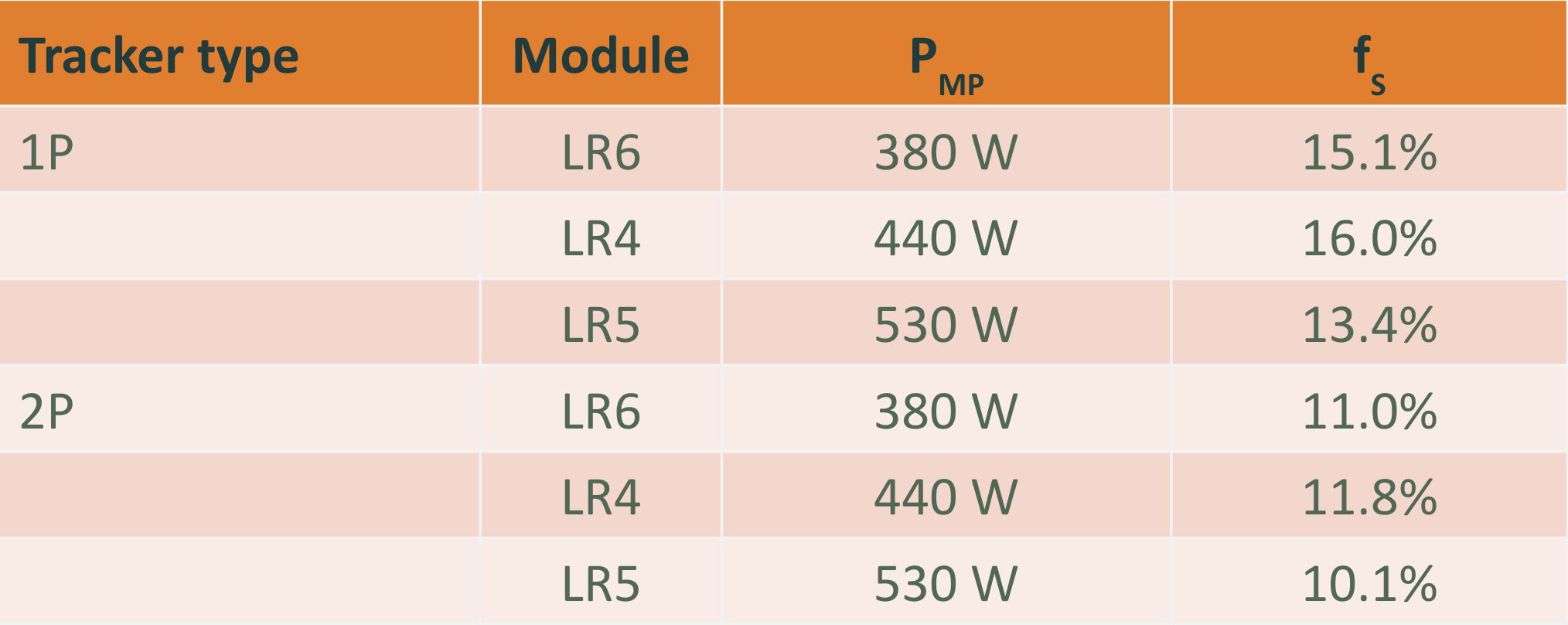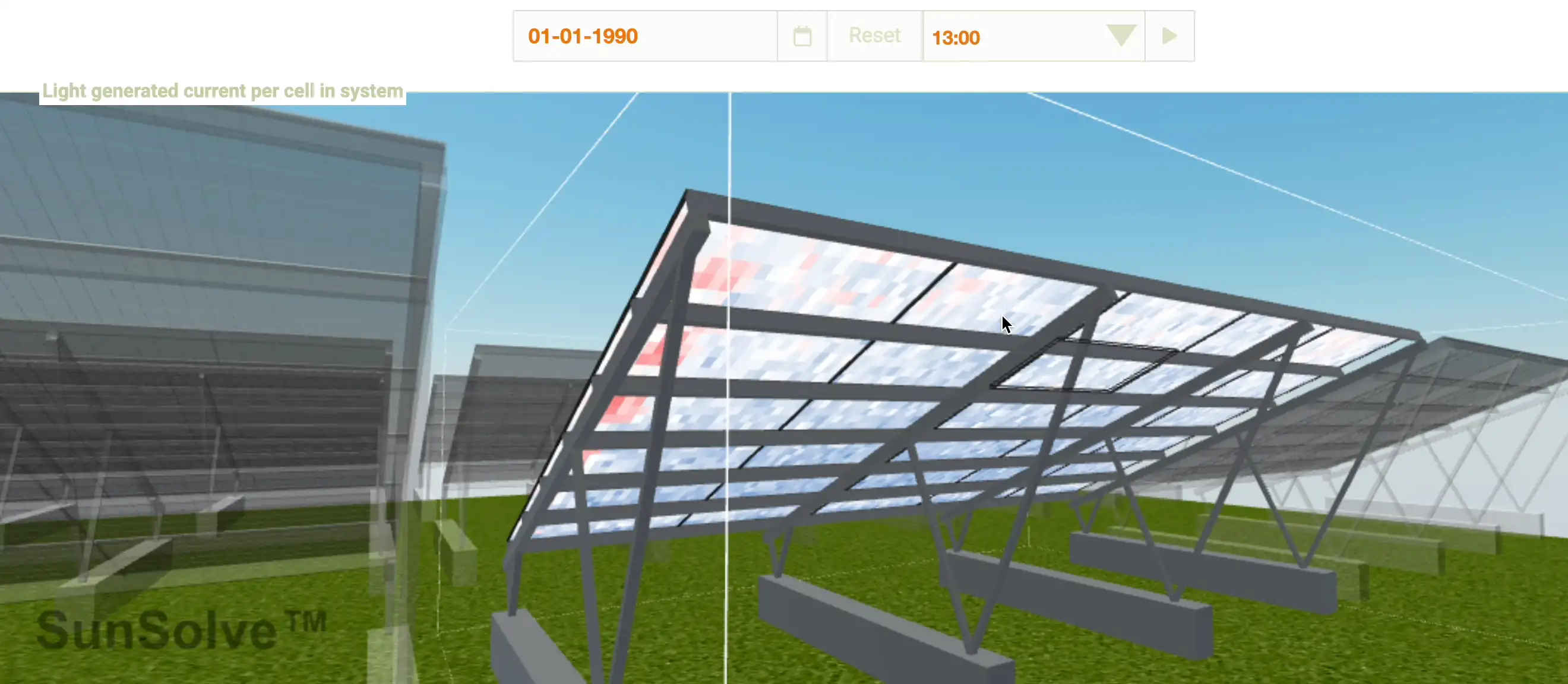Why do you need bifacial factors?
The majority of yield forecasts are conducted using the simple view factor model. It is based on a simplistic view of the layout of a utility-scale solar farm and relies on many assumptions that don't hold up in reality. To account for this discrepancy between the model and reality, users must enter a series of loss factors to adjust the output of the model. These loss factors adjust the simulation to account for:
- Structural shading,
- Electrical mismatch and
- Edge of system effects.
How much do they change from site to site?
While you might assume that these factors would be the same for two different locations using an identical tracker, that is not the case. As you can see from the following example, small changes like changing the module type can significantly impact the shading factor.

The following example shows how the rear mismatch factor changes from site to site. For an identical system, the weather and latitude drive significant changes in mismatch.

The following example shows how the rear mismatch factor changes from site to site. For an identical system, the weather and latitude drive significant changes in mismatch.

How can SunSolve Help?
You can use SunSolve Yield to calculate the bifacial and spectral adjustment factors using SunSolve's advanced algorithms and then use those results in your traditional yield forecasting system. This can help when negotiating with third parties who have used a view factor model for their forecasts or when you have other internal departments that rely on view factor modelling.
By using SunSolve to calculate the bifacial and spectral adjustment factors you can improve the accuracy of your yield forecasts and reduce the uncertainty in your project's financial model.